
So underwhelmed am I by the current (Autumn 2019) anime season, that instead of keeping up with currently-airing shows, I’ve started digging into my Eternal Streaming Backlog of Shame. Autumn 2017’s Girls’ Last Tour has been in my sights for two years, as at first glance with its cutesy-characters-on-a-journey premise it seems both aesthetically and thematically similar to Made in Abyss (broadcast the preceding Summer 2017 season, blu-ray reviewed here). I loved Made in Abyss, though it too was a backlog show for me as I did not have a UK HIDIVE subscription at the time it aired. (The only legal way to stream both shows in the UK is via HIDIVE.) In the US, both shows aired instead on the much-maligned, double-paywalled Amazon Anime Strike platform, and I suspect both shows lost many potential viewers as a result. Now both have been released by Sentai(US)/MVM(UK) on blu-ray, in very nice, if expensive, collectors editions.
Based on the 6-volume manga by writer/artist Tsukumizu, serialised between February 2014 and January 2018, the anime covers up to the end of volume 4 – only the first 2/3rds of the story. Made in Abyss has a similar problem, with the TV anime covering only the first 3 of 8 published (so far in Japan) volumes. Unlike Made in Abyss, Girls’ Last Tour has no announced movie sequel to conclude its story. So if the story is incomplete, is watching Girls’ Last Tour even worthwhile?
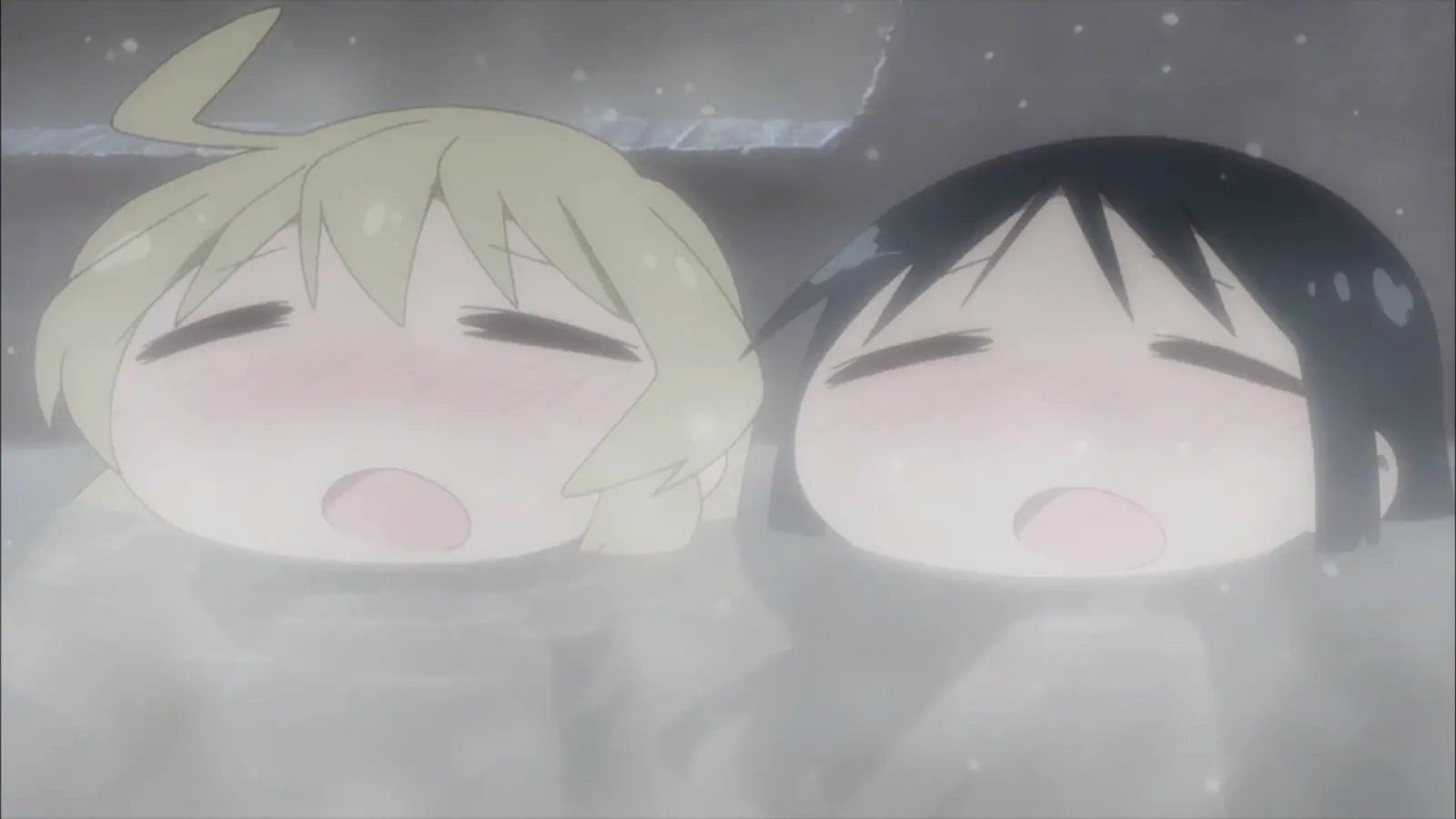
Endings are important. They can recontextualise an entire story, bringing meaning and resolution to their characters’ journey and development. A good ending can make a poor story better, a bad ending can ruin an otherwise perfect story. Endings stay with you and colour your memories of the whole experience. As a child and young teenager exposed to only rare snippets of anime, I learned to grow frustrated by the lack of satisfactory resolution in many anime OAVs and movies. Now I know that many of the shows I watched were based on other untranslated media, or had episodes unreleased in the West, so as anime became more easily available over time, these frustrations gradually lessened.
Now we live in a different age, with anime spewing from the pores of almost every available streaming service. We’ve never had such a flood of high-quality Japanese-animated entertainment. With this glut comes a new version of my old bugbear. In the rush to splurge yet more content into the eyes of voracious viewers, producers look to adapt popular and interesting manga, many of which have barely begun to develop their stories. There’s little chance many of these shows will be allowed to conclude on their author’s terms. Sometimes, like with Fullmetal Alchemist (2003), the author gives their blessing for the anime to forge its own bonkers path, separate to the manga. Sometimes, a popular series will score a second chance at a more complete adaptation. Most notably Fullmetal Alchemist Brotherhood (2009) followed the original manga more closely, including the true ending. (Compare also Hellsing, Tokyo Ghoul and Fruits Basket.) Some shows go for anime-only endings that are truncated, illogical and poorly-conceived. Look at Gantz or Blue Exorcist. Yet more just sort of… stop without proper resolution, like Tenjho Tenge, Princess Jellyfish or Elfen Lied. Lately we’re getting more sequel seasons of shows than we used to, which in some ways is a positive step. We’re also seeing less egregious filler episodes in long-running shonen properties, for example My Hero Academia could easily have gone the 52-episodes-a-year-quality-be-damned Naruto or Bleach route and unleashed great torrents of time-wasting dreck. Instead, the producers have wisely chosen to follow a two-cour-per-year plan, allowing the anime to keep pace with manga developments. (See also: The Promised Neverland.)
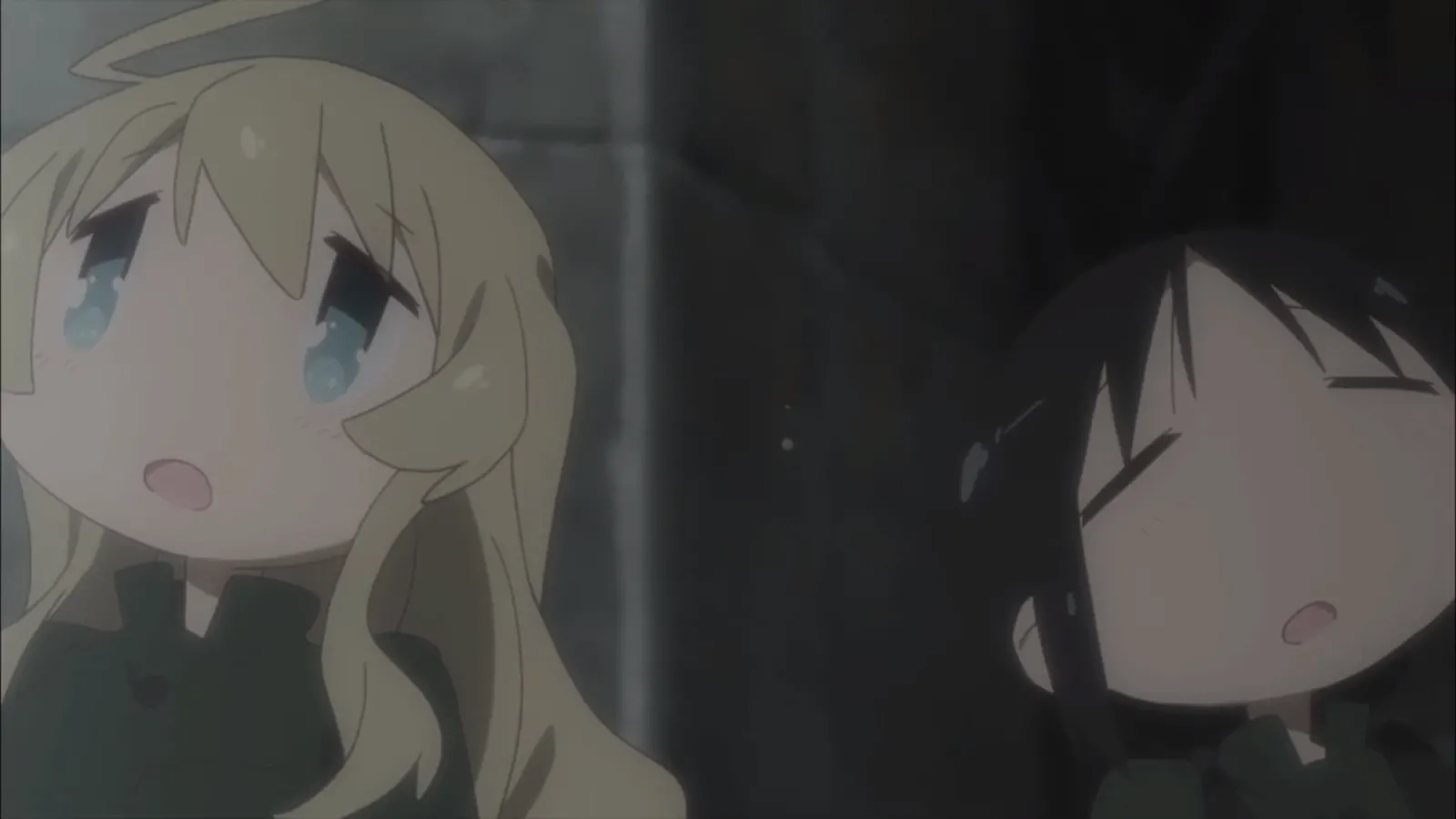
Manga and anime share an interesting and unique relationship between their different media. Nowhere else are books adapted so (usually) faithfully to the screen. Hollywood adaptations of famous books are renowned for being abominations. This has changed to an extent with the advent of the Harry Potter and Lord of the Rings movie franchises – their success paved the way for at least some slightly more respectful cinematic adaptations. On the whole though, one cannot perform such direct page-to screen comparisons book-to-film as with a manga and its anime adaptation. Not even with Marvel or DC comic book movies, which regard their progenitor comics as mere inspiration rather than sacred, inviolate texts.
So where does that leave the myriad 12-or-13-episode oddities, those shows that although are faithful adaptations aren’t based on super-popular mega-franchises? Sometimes if we’re lucky, they’re picked up for sequel series (maybe years afterwards, like Chihayafuru). More often, they’re left forgotten, their stories forever incomplete, with the oft-repeated words “read the manga” ringing in the ears of their fans. I fear Girls’ Last Tour will be left in that final category. At least the translated manga is freely available in the West. Thank God for Amazon Prime (other online retailers are available) as when I finished watching Girls’ Last Tour’s 12th episode, I ordered the two concluding manga volumes next day delivery as I NEEDED to know how the story ended. That’s not to say that the anime’s ending isn’t satisfying in its own way, and had I not known of the existence of further material, I would still have considered it a worthwhile watch.
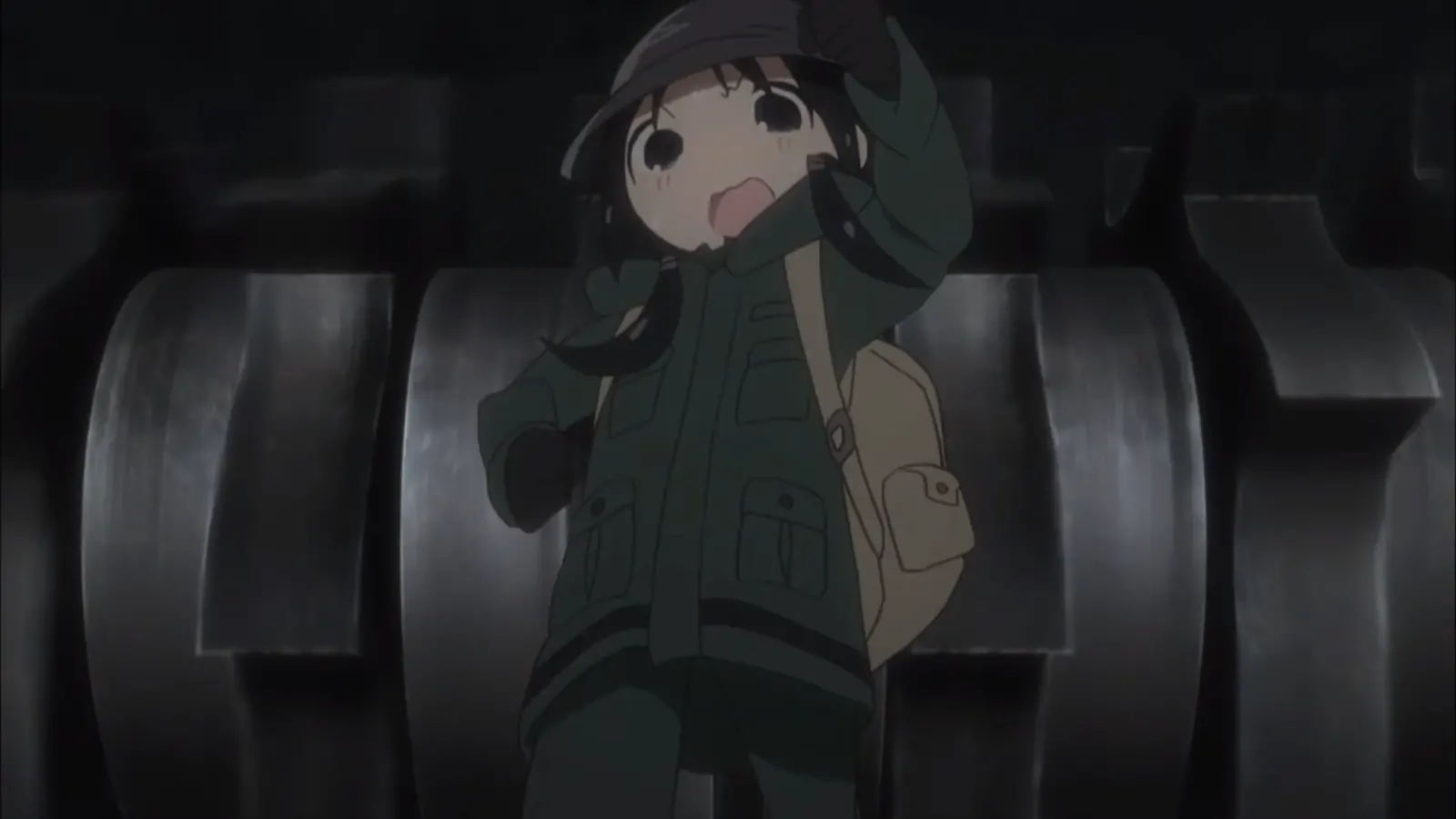
MODERATE ANIME AND MANGA SPOILERS FOLLOW
Girls’ Last Tour follows the journey of two teenage girls – stoic, bookish Chito and air-headed, upbeat Yuuri – through a mysterious, decaying and empty, gargantuan, multi-level city. They mainly travel on their“Kettenkrad” an odd little vehicle with motorcycle handlebars and tractor treads used by the Germans in WWII, big enough to carry two people with their supplies and mobile enough to traverse steep slopes and irregular terrain. The Kettenkrad is almost as much of a character as Chito and Yuuri.
One day our two child protagonists are sent away from their home on one of the lower strata of the unnamed city by their grandfather. It is implied that he dies shortly afterwards, possibly at the hands of soldiers attacking their settlement. He instructs them to head “upwards”, and so they do – up through the various levels of the city, with the aim of reaching the top to discover what is there. Their journey is a lonely one – they meet only two other living humans during the entire trek, and both encounters are short studies in existential futility. Most of the time, the show is a two-hander, exploring Chito and Yuuri’s differing reactions to the situations and setbacks they experience.
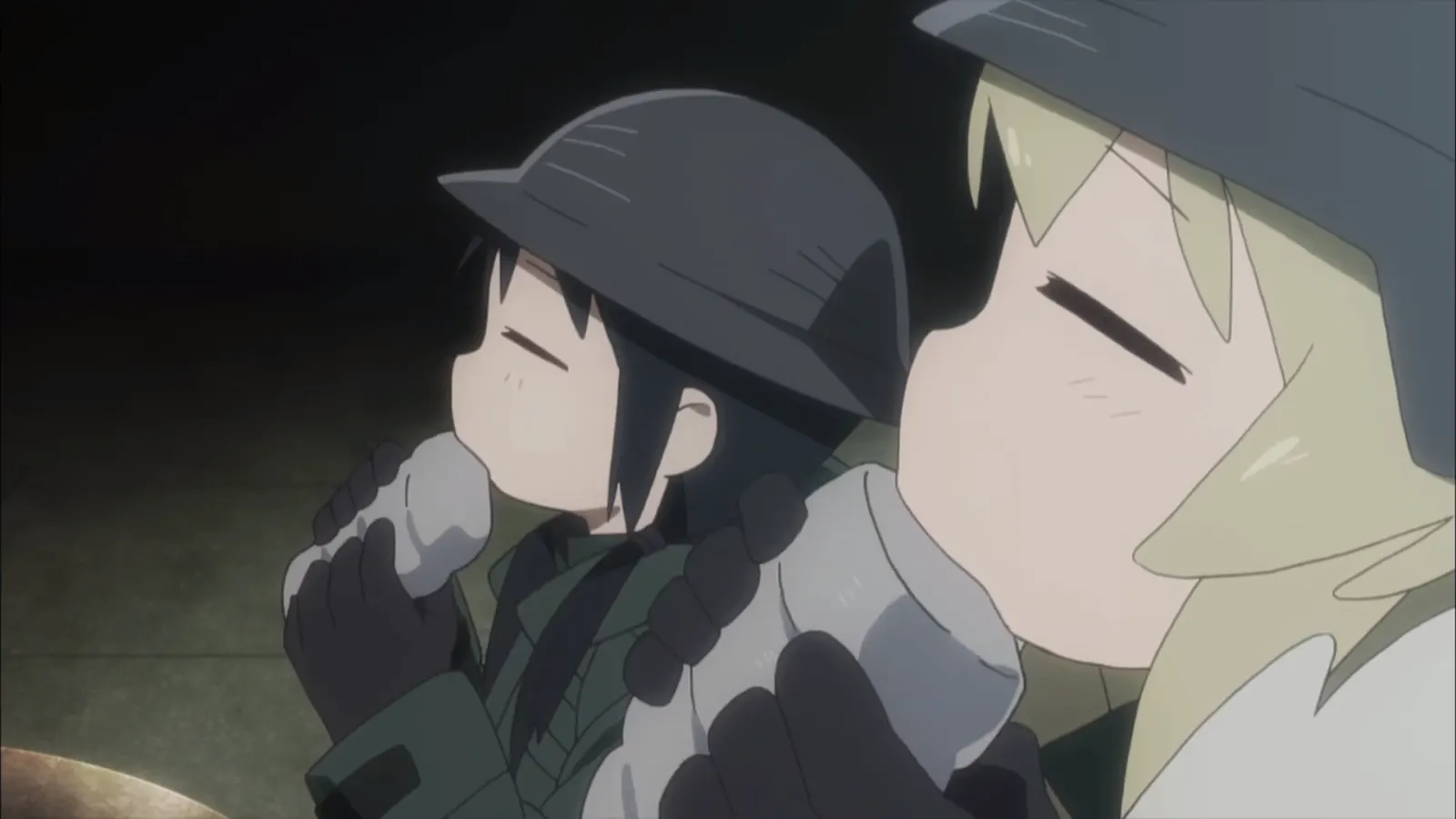
For a show about the end of the world, Girls’ Last Tour is surprisingly cheerful. Yes, the overall tone is melancholy with a background hum of ennui and pointlessness, but the girls remain doggedly upbeat and purposeful, ever moving forwards. Chito in particular is fascinated by the city’s history and obsessively collects any books she finds, whether she can read them or not. Yuuri lives in the moment, and is more likely to burn books for heat than care about their contents (much to Chito’s horror). Their relationship is central to why the show works – they bicker and fight, frequently punching one another in annoyance, but they care deeply for one another, their sororal bond manifesting in the little ways they express their love. Their opposing personalities and skillsets are complementary, and neither would survive long without the other. Unlike Made in Abyss there’s little in the way of sexual tension here. Even the scenes of nude bathing are entirely innocent in context. There is thankfully no ecchi or suggestive material, and I found that refreshing.
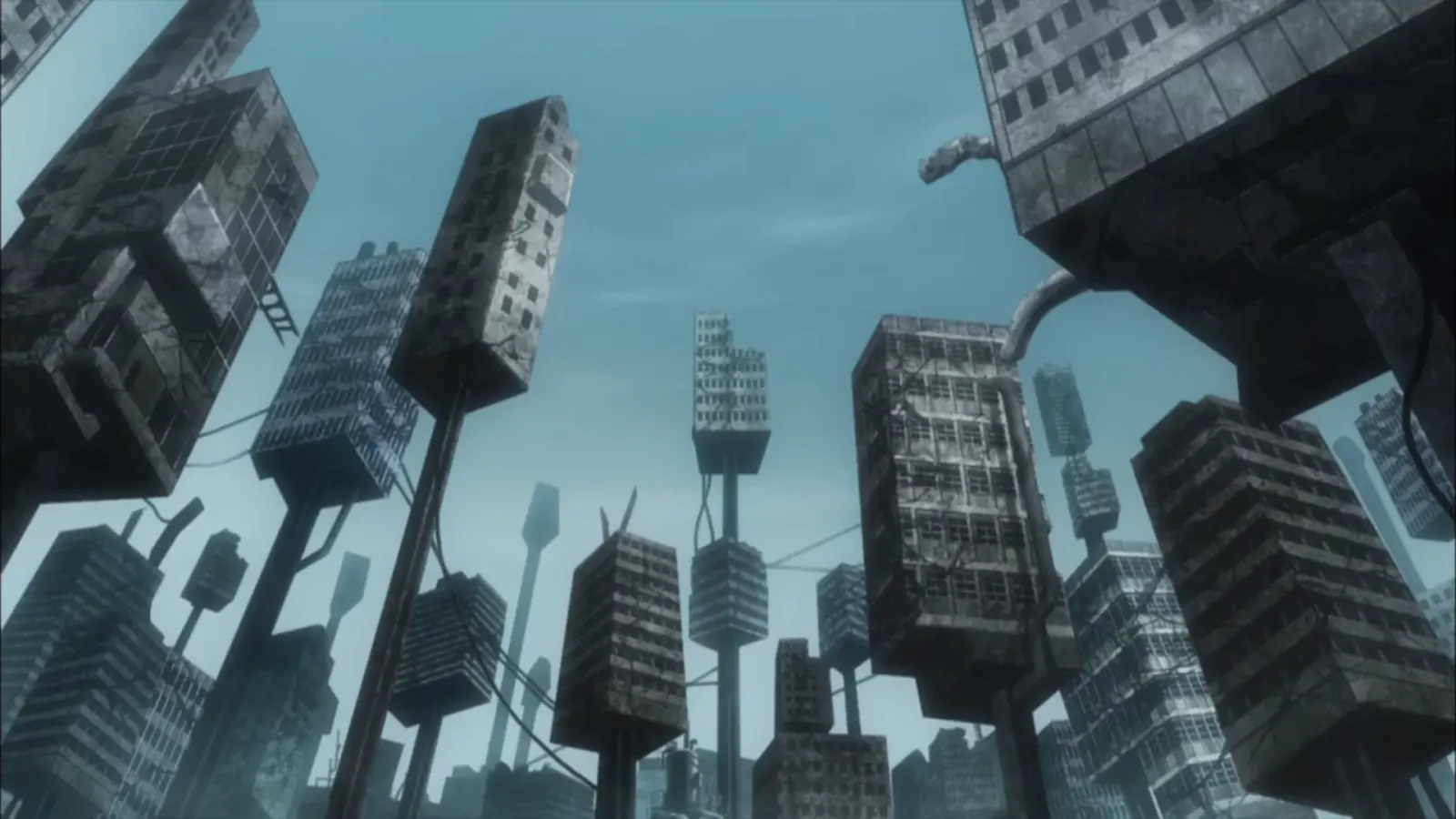
The city itself is enormous, grey, oppressive and in places alternately claustrophobia- or agoraphobia-inducing. One particular scene involving a risky drive up the outside of a spiral tower almost triggered an anxiety attack in me. Although the city is depicted almost entirely in metallic grey tones (making for a particularly limited colour palette that adds to the atmosphere) the show is never boring to look at due to the creative design. Apart from the (deliberately) incongruent poppy upbeat opening and ending songs, the soundtrack leans heavily into ethereal and mysterious, like post-apocalyptic Enya. Music and visuals build to complement the other very effectively. Every level of the city, and each area within those levels, has a specific unique aesthetic, whether it is a dark factory riddled with huge pipes, a huge graveyard/memorial filled with obelisks lined with locked cabinets or a strange empty town populated with oddly-staring cylindrical statues. The show hints that the entire world has been covered in cities – to its detriment. There are no trees or plants in this urban sprawl, no birds, no animals. The only other non-human living animal they find is a single fish cared for by an aquarium’s last remaining caretaker robot. They have to save the fish (however much Yuuri wants to eat it) from an automated deconstruction mech. They succeed, but to what end? As the last of its species, the fish will die anyway. All they’ve done is delay the inevitable.
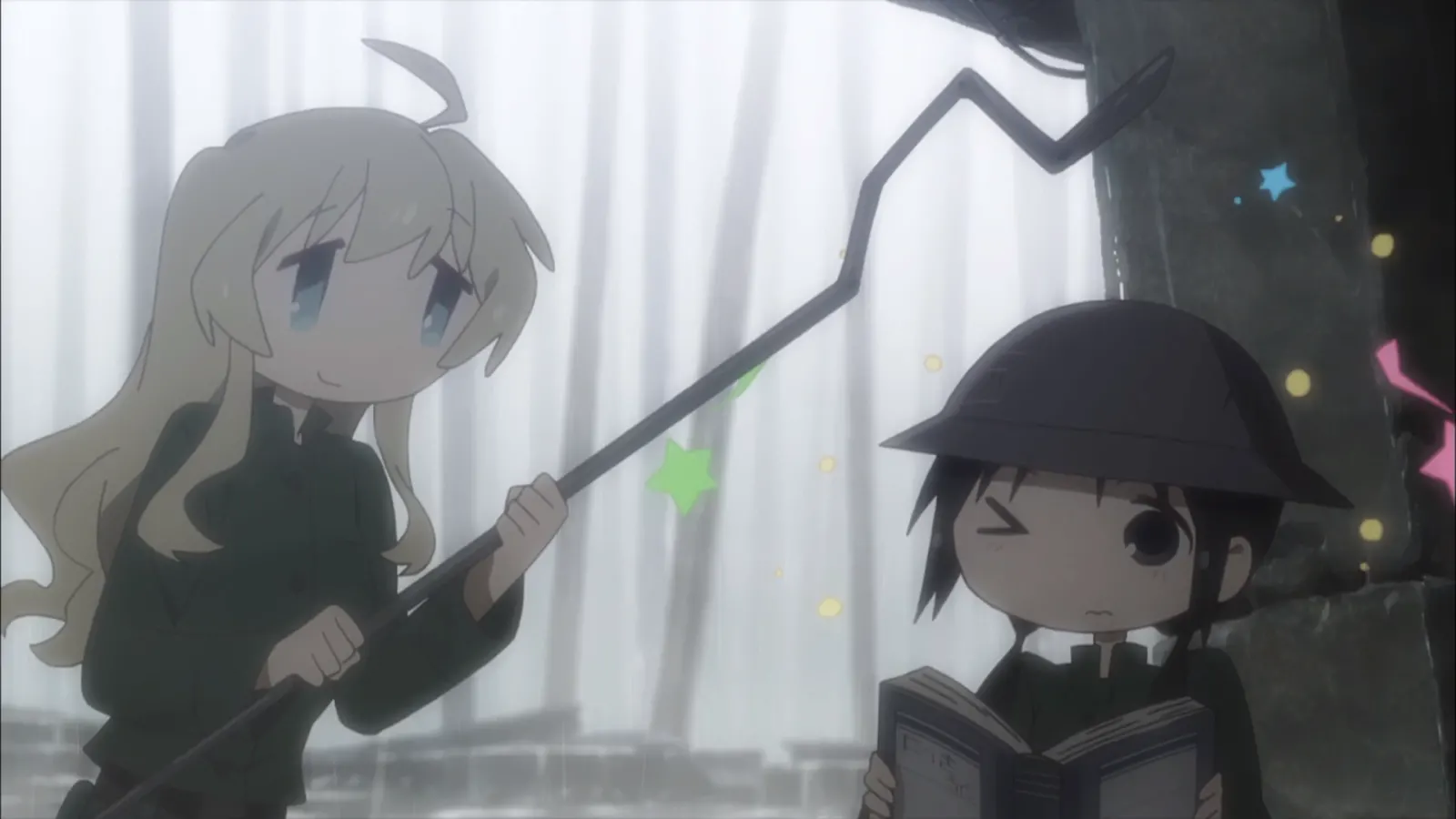
One of the primary themes is about the inevitability of the end. After the first few episodes, Chito and Yuuri meet no other humans on the upper levels of the city. Nor do they find any bodies. It’s like an enormous, spooky ghost town. Something about this reminds me of an old Star Trek comic I read as a child. It was old even when I read it, belonging as it did to my uncle. It was Gold Key issue #3, Dec 1968 – Invasion of the City Builders. The Enterprise finds a planet covered almost completely by a gargantuan city, built by out-of-control autonomous builder robots. Only a few people survive and they fight against the dumb machines to salvage what remains of their natural world. The Enterprise crew of course step in to save the day, and the survivors vow to one day fill the city with their ancestors. Girls’ Last Tour is like a version of that story where The Enterprise never shows up. The city covers the planet, so the only way to build more is to go up, so the city grows on ever higher platforms set one above the other, blocking out the sky for the people below. One AI the girls meet explains that mankind wanted to remove themselves from the order of the natural world, building cities to meet their needs instead of integrating with the planet. This dark, cold and sterile world was the result. It’s an incredibly evocative premise, and the decision to present this world through the eyes of two innocents was a clever one.

An adult viewpoint character in this situation might be more prone to hopelessness and depression, yet these girls take everything in their stride. Yes, they’re curious about the state of their world, but their overall focus is on day-to-day survival – finding food, shelter, fuel and water. Everything they do is driven by the pursuit of these basic needs, and their desire to go higher. These goals are easy to identify with. Riko and Reg’s journey in Made in Abyss is to head deeper and deeper down, further into the unknown depths. They also concern themselves with finding food and shelter, but their overall goal is far different. Riko is pursuing the past – her mother – but as a way to seize her future. Chito and Yuuri realise that there is no future for them. Like their Abyss contemporaries there’s an element of archaeology to their journey, both are learning about an old, dead civilisation that passed long before their own – but the modern civilisation in Abyss still survives. In Girls’ Last Tour, the girls’ own society has already crumbled. They might as well be the last living people. Their journey won’t enrich mankind by seeking out new secrets, uncovering lost wisdom. There’s no-one left for them to report to. Yuuri and Chito’s ultimate destination is towards death – both their own, and that of their world.
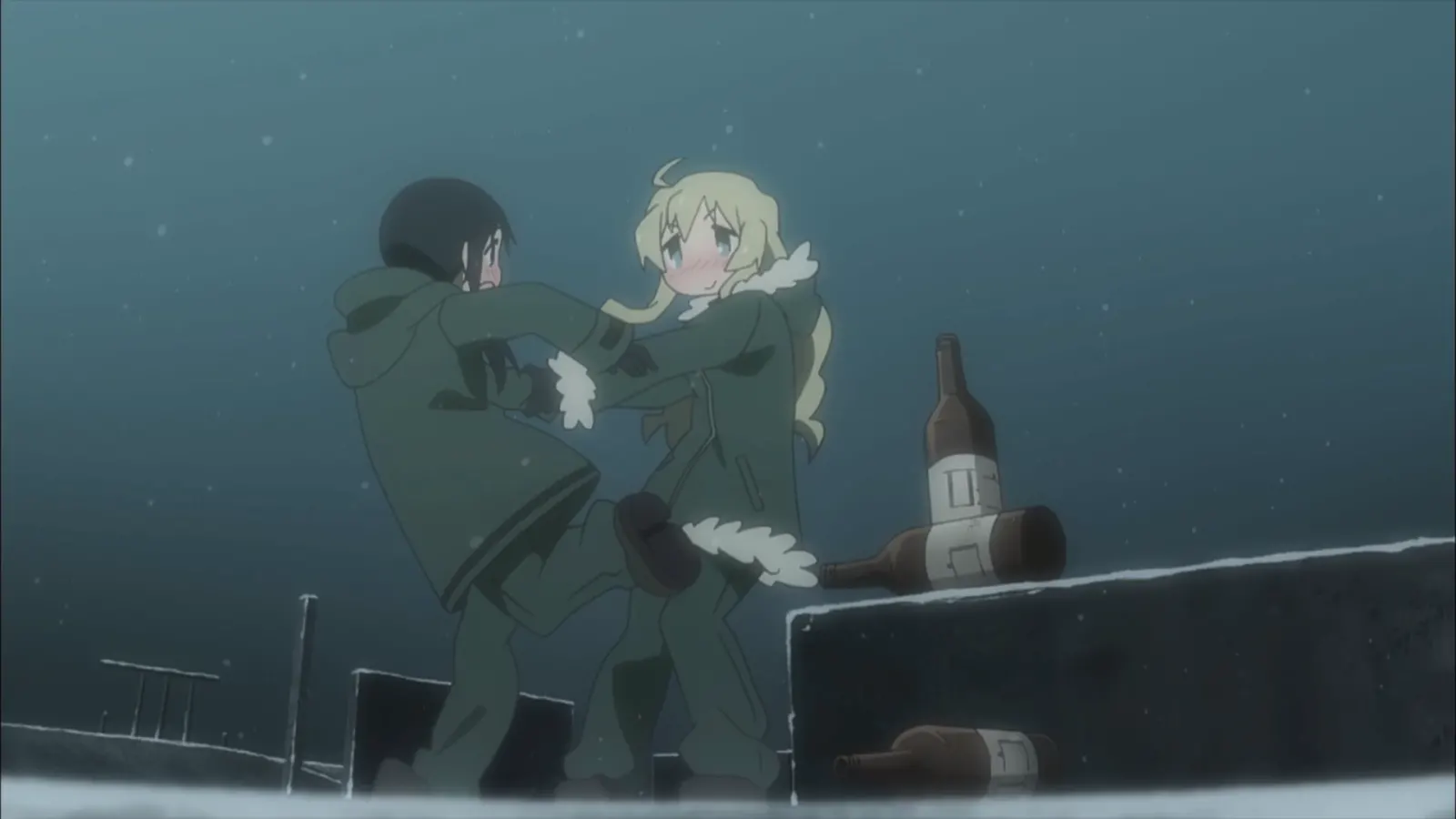
There’s an air of finality that permeates the whole series, not least in the way that their journey is shown to be irreversible. Even if they wanted to return home, there’s no way they’d be able to retrace the route, their path littered with crumbling, collapsing bridges and faulty elevators that functioned only to allow an onwards journey. Yuuri and Chito are funneled towards their eventual fate, driven by hunger and need for warmth. Although the show often feels like a comfortable slice-of-life, the threat of starvation is always in the background. Their world is dead, the very few plants they find are withered and the rare tinned goods and army rations they subsist on are in scarce supply. In one particularly sad scene they find a bar of real chocolate but misunderstand its significance, stating it “tastes just like that rations bar we found that one time”. Their innocence stretches into an ignorance about even the most basic of items we take for granted – like artwork, flowers and trees. Another sweet scene is where they discover some unopened bottles of beer and get tipsy together without understanding why and collapse into a heap of giggles on the ground. Such episodes provoke not only laughter, but a kind of sad, longing melancholy that persists long after the show ends. Girls’ Last Tour is one of those rare shows that makes you feel both happy and sad at the same time, a potent and ethereal concoction with a pleasant if bitter aftertaste. Much like their beer, I suppose.
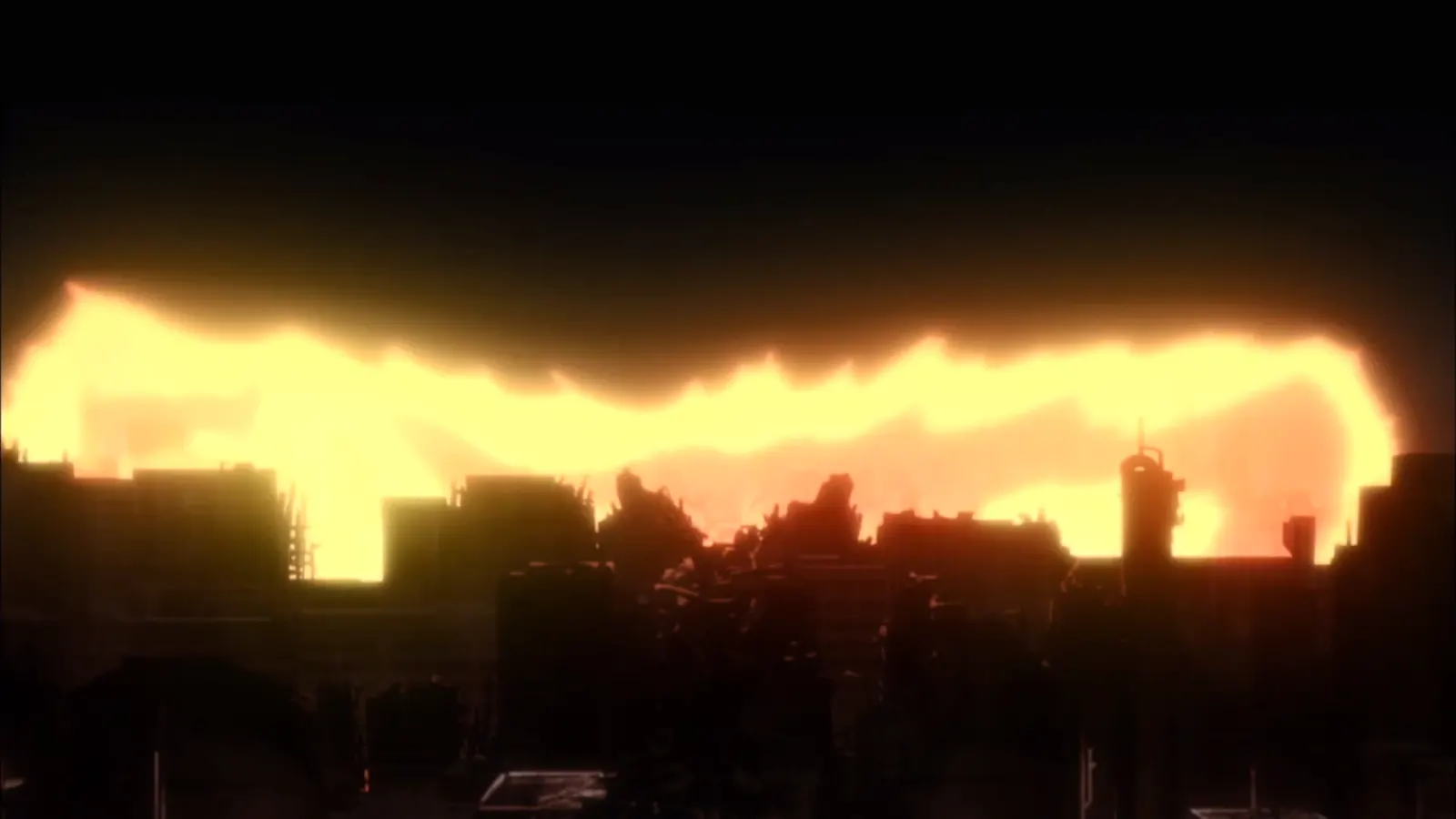
The shadow of war overhangs the story like a distant but heavy shroud that covers everything. Their city did not collapse by itself, but by the stupidity and pointlessness of (presumably) international or worldwide conflict and self-genocide. Buildings everywhere crumble not only with age, but are pockmarked with holes from weapon fire, bomb explosions or worse. Chito and Yuuri are pretty matter-of-fact about this, the antiwar subtext is kept in the background without either character pontificating on the pointlessness of their ancestors’ deaths. They don’t need to, the setting speaks for itself. As they ascend to greater heights, the war damage becomes more obvious, with huge craters in the ground and destroyed skyscrapers tilting at weird angles. An encounter with a collapsed death-mecha illustrates the power of the dead civilisation’s weaponry. Yuuri presses a Big Red Button in the cockpit (because that’s always a great idea) and unwittingly destroys multiple empty city blocks in an apocalyptic conflagration of iridescent flame. Unsure of how to process this, she erupts into insane laughter and presses more buttons, worsening the damage until Chito slaps sense into her, horrified at the ease of the wanton destruction. These death-mechas reminded me very much of the God Warriors from Nausicaa of the Valley of the Wind. This scene is one of the few to directly address the madness and horror of war through the reactions of the characters, and it is very powerful.
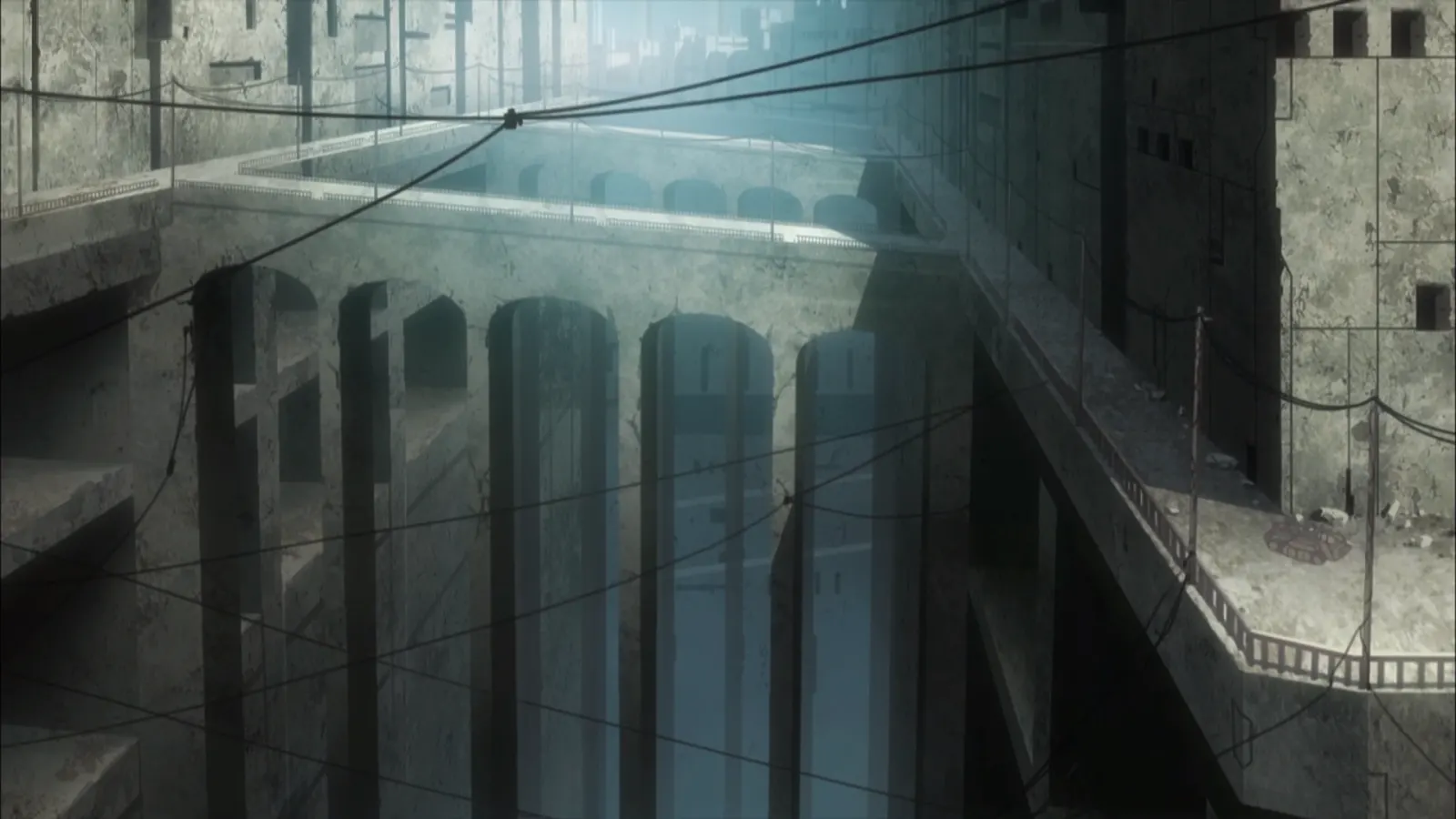
As an adolescent, two sci-fi movies made a huge impression on me and the way I saw the world. The first, and probably more widely known was Silent Running, the 1972 spaceship-based Bruce Dern-starring story of a lone man’s attempt to save the last remnants of Earth’s plant life from corporation-mandated destruction. It’s quite a downer of a movie, about a sterile future where no-one values the natural world. The second was obscure 1985 New Zealand film The Quiet Earth. I saw this on a late-night BBC2 weeknight showing without having a clue what it was about. Imagine a movie version of the TV series Last Man on Earth but without the comedy. This thought-provoking, unsettling film influenced my thoughts to the point that I, as a 13-year old boy embarked on writing my first novel, about a lonely post-apocalyptic journey across an empty, ruined world. In light of this I feel that Girls’ Last Tour could have been made specifically for me, and me alone. The anime resonated very strongly with me, though I wish it had managed to adapt all of the original material.
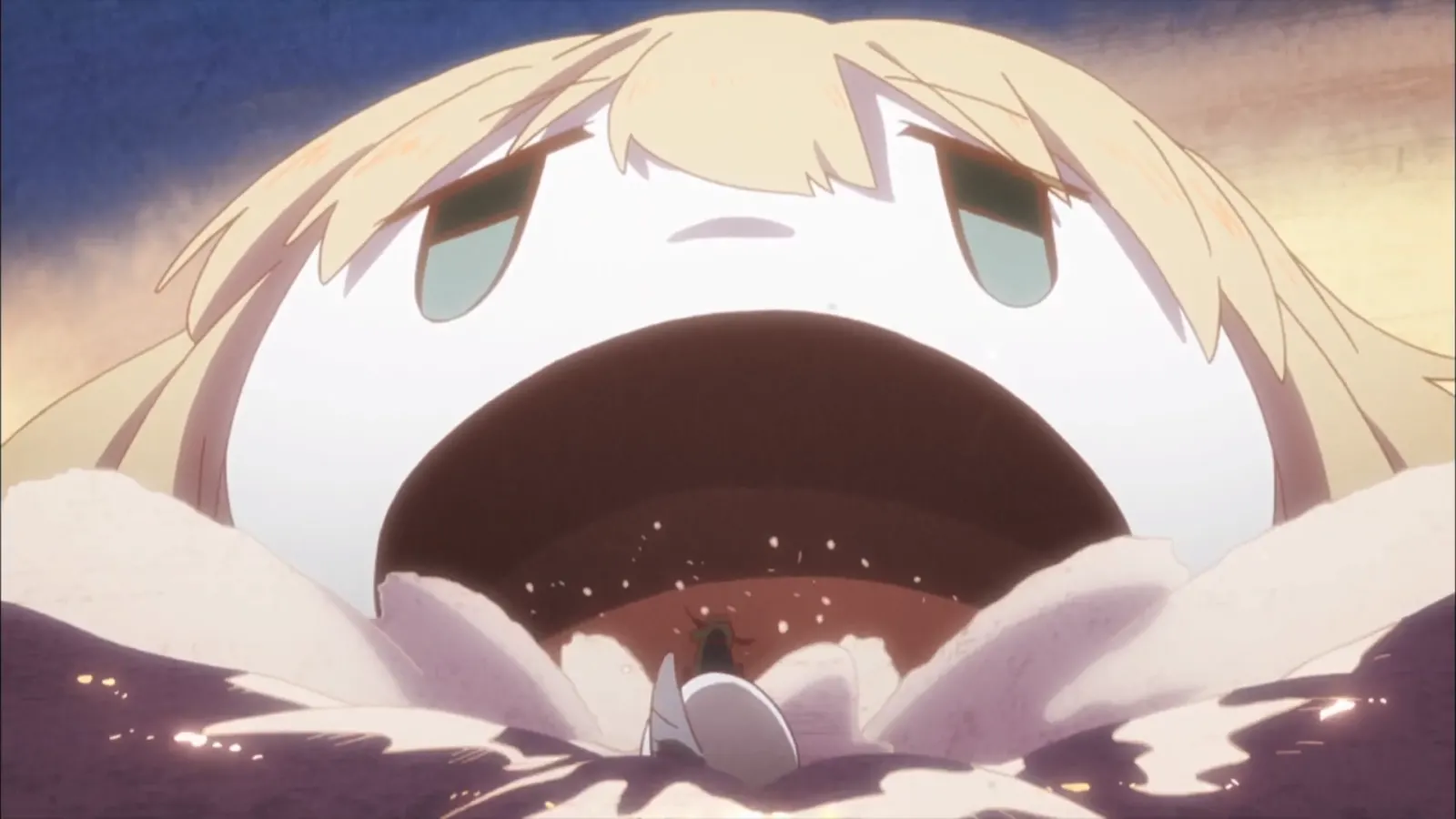
VERY SIGNIFICANT ANIME AND MANGA ENDING SPOILERS FOLLOW
The final episode does bring the series to a thematic conclusion. The discovery that their camera contains every single photograph taken by every previous owner produces a powerful scene that not only provides some essential backstory but also for the first time triggers feelings of loneliness in the girls. Up until then they had been content in each other’s company. Chito then temporarily loses Yuuri to the gaping maw of a blob monster and fears she’ll be left alone and unable to survive without her friend. We feel her heart lurching, we worry more for her future then than at any other time in the series. Thankfully the situation is resolved and they meet some strange flying mushroom “mystery people” who I wonder are either evolved AIs or some kind of planetary antibody? The reason the city is so empty of both bodies and human technology is that these creatures have been cleansing the earth of weaponry and most likely also of dead humans. “We don’t eat humans while they’re still alive,” one of them says, regurgitating a perfectly healthy Yuuri, much to Chito’s (and ours’) relief. The girls learn here that they are the last humans – at least in the upper city, their two previous temporary human companions in the lower city notwithstanding. There, the anime ends. This ending is fine, I suppose, but the manga progresses the story in some important ways that would have been amazing to see in animation.
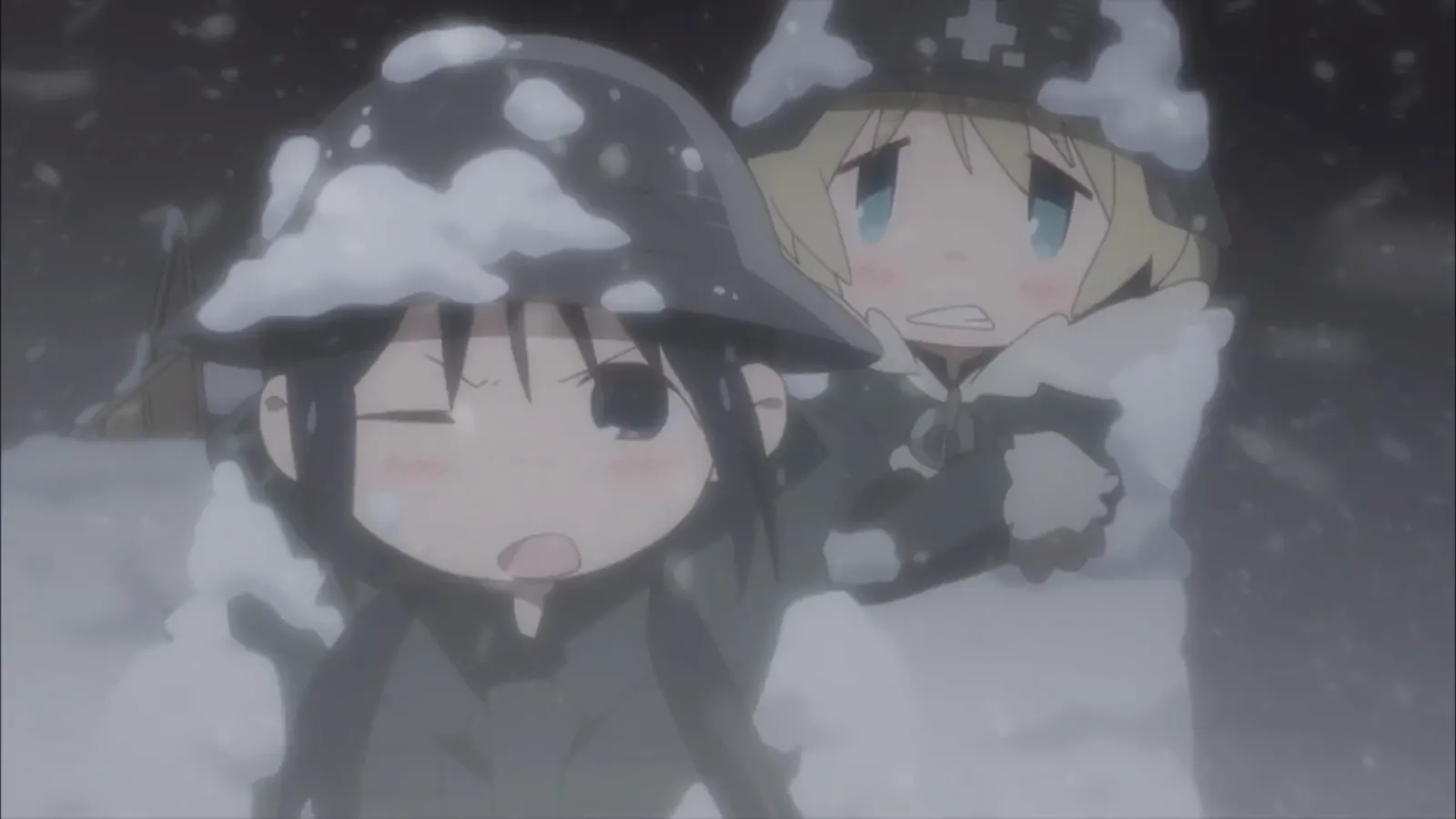
Take the chapter in which Chito injures her leg and is unable to drive. Yuuri’s attempt to assume her friend’s driving role is terrifying and almost leads to their deaths. It only reinforces their interdependence. Then the heartbreaking chapter where their trusty vehicle finally breaks down for the last time, and after failing to repair it, Chito hollows it out, seals the edges and turns it into a bath. Then they abandon it and trudge the rest of their journey on foot. It is at this point the reader may finally twig (if they haven’t done so already) that the girls have long since reached the point of no return and their time is coming to an end. Through the final few chapters they slowly traverse a freezing, desolate and surreal landscape, running out of food and burning Chito’s beloved books and even eventually her personal journal, the history of their journey. And once they do finally reach the top, after an arduous climb in utter darkness following the death of their lantern, they find at the top… absolutely nothing. The final, highest level of the city is a desolate, flat, snow-covered plain bereft of shelter, purpose or meaning. It is here that they finally rest, smiling in one another’s arms, beneath their blanket. Their ultimate fate is left to the readers’ imagination, but it does not take a great deal of imagination to conclude that this truly is the end of our beloved characters’ journey through the city, and through life.
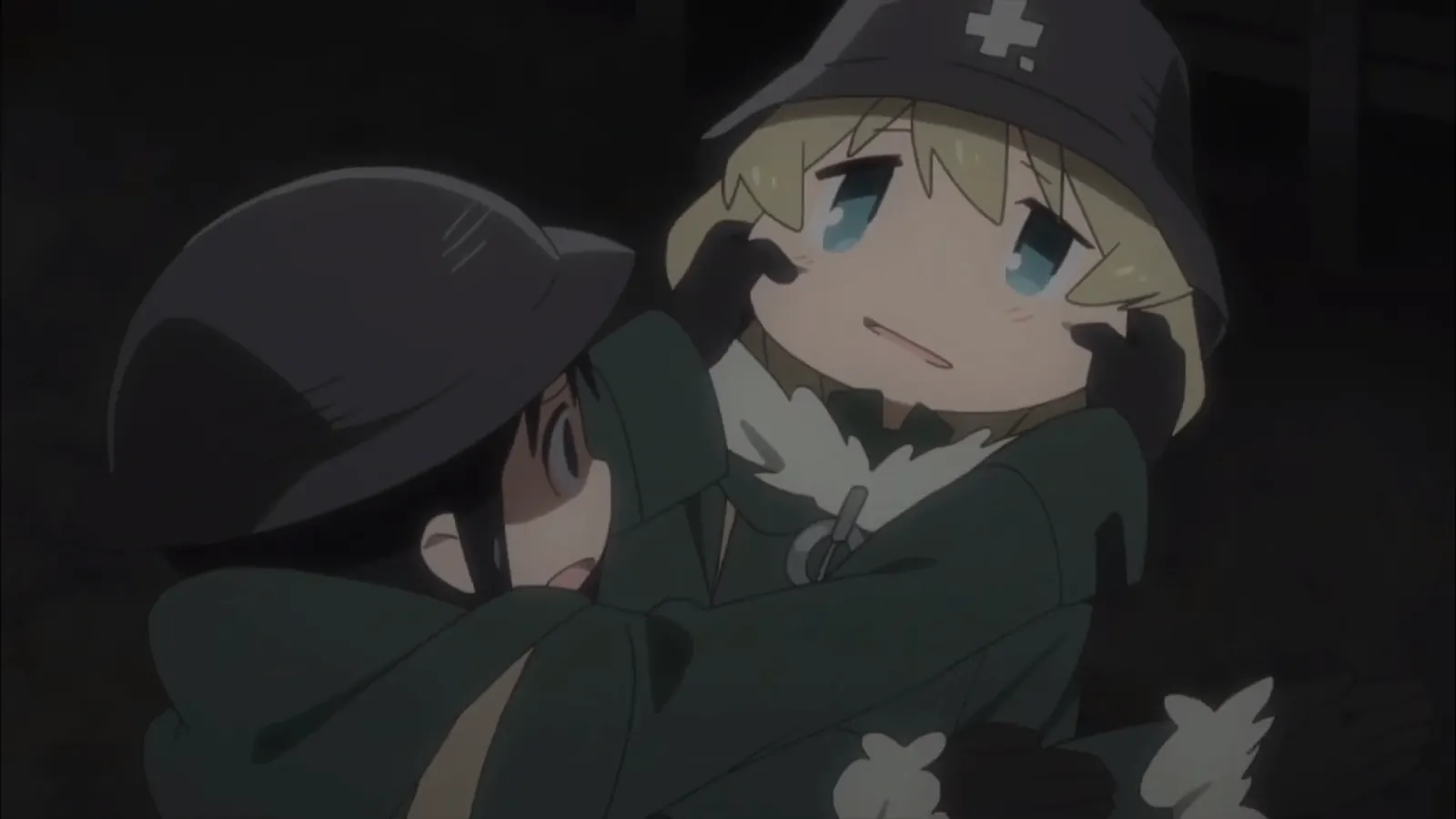
That the end goal of their journey proved to be pointless fits with the entire tone of the series and with the experiences of the other characters the girls meet during their ascent. The mapmaker who gives them the camera – he loses his life work as the maps he has painstakingly compiled over years accidentally fall to a lower level, scattering irretrievably to his despair. The aircraft engineer who engages the girls in helping her to finish building her plane falls from the sky as her attempt to escape the city fails when the wings fall off and she drifts with her parachute down to the lowest city levels. The lone-surviving briefcase-shaped maintenance droid who existed only to protect the last remaining fish, and its enormous deconstruction counterpart who ignored its pleas to stop dismantling the aquarium. The lonely tour-guide AI that leads the girls to their final ascent who then begs to be allowed to die, in fact has been waiting perhaps thousands of years for someone – anyone human to give her the permission she needs. All of these characters had been engaged in apparently pointless pursuits that even so had for a time given their existences meaning. It doesn’t matter that Chito and Yuuri found nothing at the city’s summit. What could they have possibly found that would have given any further meaning to their last tour? In this case, the journey really was the point, as was the friendship they built and maintained on the way. I am glad to have joined them on it, and also more than a little bit sad. But don’t they say that sadness is kind of like happiness for grownups anyway?
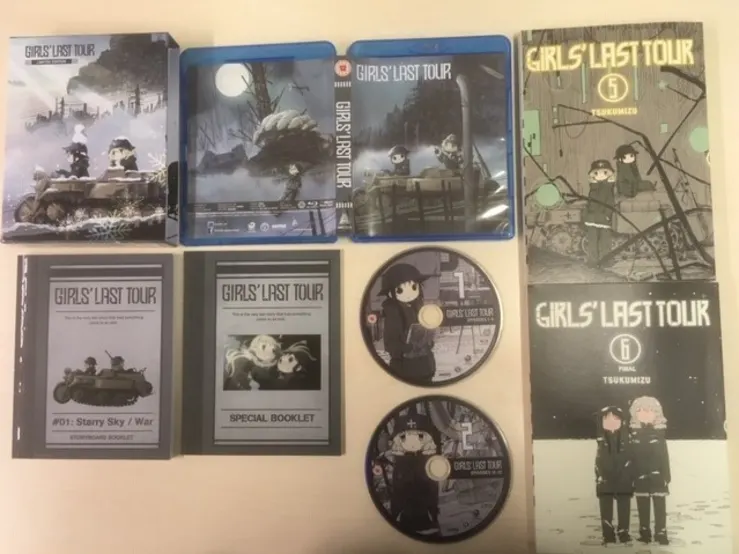
Girls’ Last Tour is available to stream both dubbed and subbed in the UK on HIDIVEor in the US on Amazon Prime Video.
Girls’ Last Tour Collection Collector’s Edition Blu-ray Box Set
Director: Takaharu Ozaki (Studio White Fox)
Based on the manga by: Tsukumizu
Distributor: MVM Entertainment
Region: B
Rating: BBFC 12
Language: Japanese or English audio with English Subtitles
Runtime: 300 minutes
UK release date: 13th May 2019
Original Japanese TV Broadcast: October 6th 2017 – December 22nd 2017
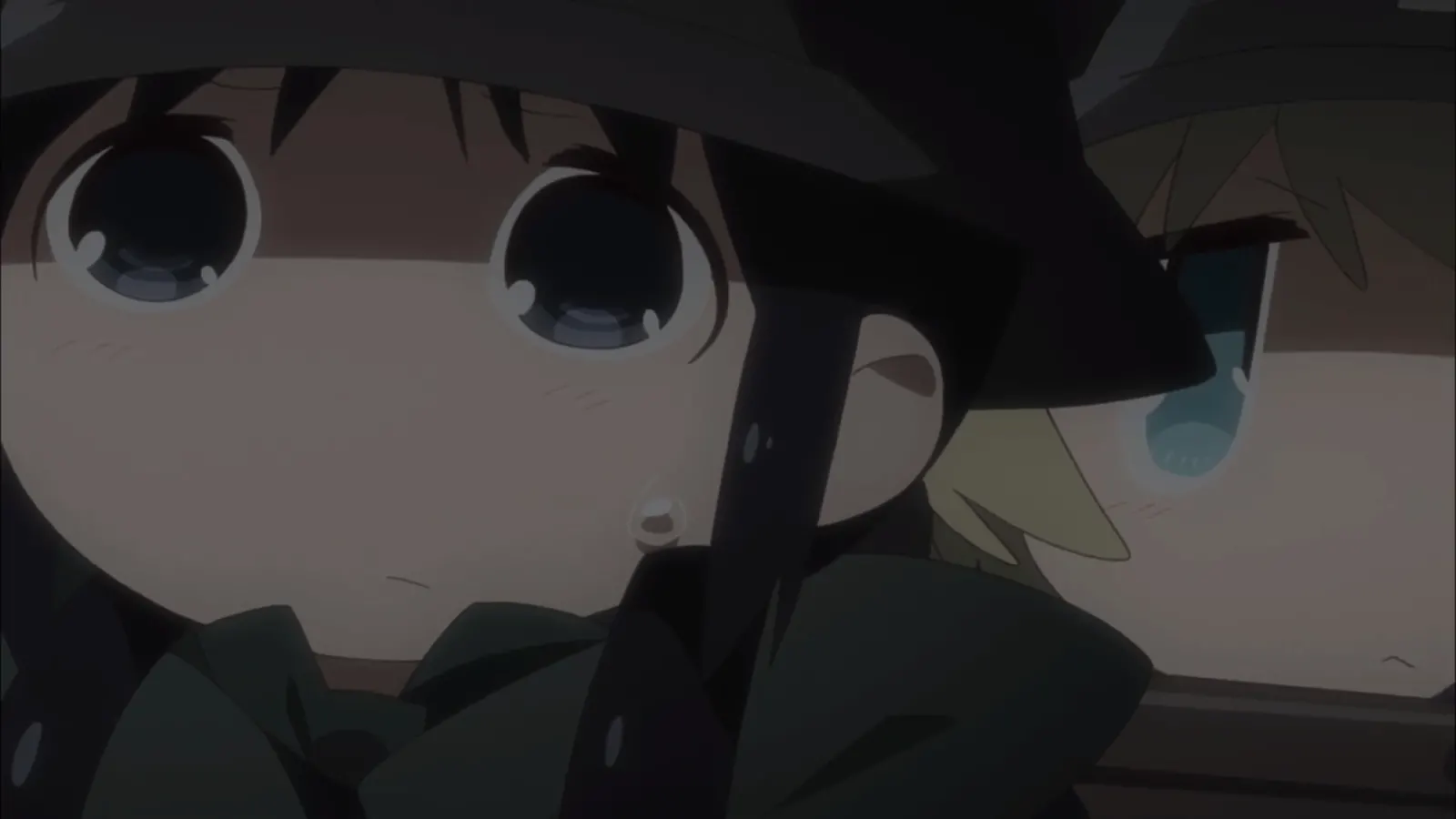
You’re reading AniTAY, a non-professional blog whose writers love everything anime related. To join in on the fun, check out our website, visit our official subreddit, follow us on Twitter, or give us a like on our Facebook page.

Get involved!
Comments